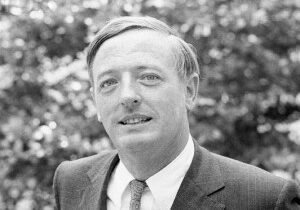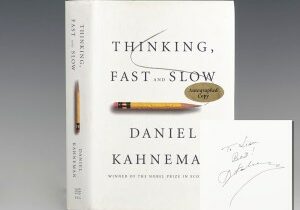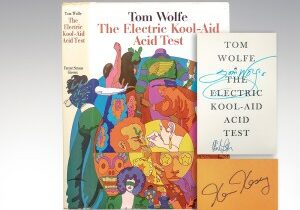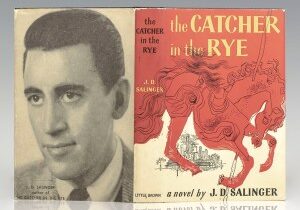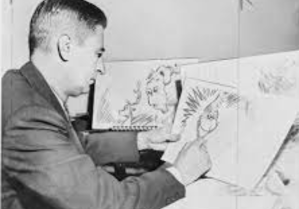Widely considered one of the most influential American Presidents to date, Ronald Wilson Reagan remains one of the most iconic figures within the American Republican Party. As the leader of the modern conservative movement, Reagan altered the the political dynamic of the United States and his policies and beliefs have been frequently invoked by several contemporary Republican presidential candidates who have aimed to liken themselves to him, even imitating his campaign strategies.

Rare portrait of Ronald Regan in one of his most famous roles, George Gipp, in the film “Knute Rockne, All American”; signed by Reagan and from the collection of his brother-in-law Dr. Richard A. Davis
Born in Tampico, Illinois on February 6, 1911, Reagan graduated from Eureka College in 1932 and moved to California in 1937 where took a screen test that led to a seven-year contract with Warner Bros. studios. He made his big break in 1942 with the production of “Kings Row”: as double amputee Drake McHugh who famously uttered the line “Where’s the rest of me?”
Reagan would later use the line of the title of his first autobiography, published in 1965, in which he concluded: “The most important thing a man can know is that, as he approaches his own door, someone on the other side is listening for the sound of his footsteps. I have found the rest of me.”

Rare original photograph of President Ronald Reagan, First Lady Nancy Reagan and their two children: Ronald Jr. and Patti; signed by Ronald and Nancy Reagan.
Reagan met actress Nancy Davis in 1949. Davis was a Hollywood actress with ten movies to her credit and said of their first meeting: “I don’t know if it was exactly love at first sight, but it was pretty close.” They were engaged at Chasen’s restaurant in Los Angeles and were married on March 4, 1952. They had two children, Patti, in 1952 and Ron, Jr. in 1958.

Signed photograph of President Ronald Reagan standing with Dr. Richard A. Davis, Nancy Reagan’s brother; inscribed by Reagan to Davis.
Our collection currently includes a number of signed photographs and portraits of Reagan from the personal collection of Nancy’s brother, Dr. Richard A. Davis. Davis had a close relationship with his sister and President Reagan. He and Mrs. Davis attended both presidential inaugurations and visited the White House frequently during the Reagan years. Dr. Davis and Ronald Reagan shared a particularly great rapport, Davis’ daughter Anne noted, “They were very, very close. My dad thought the world of him as a human being, They just had a great friendship. My dad was serious, and the president had a great sense of humor, so it was a great match. And my dad loved his sister, so they loved the same woman in different ways.”

First edition of Ronald Reagan: His Life in Pictures; from the collection of Prime Minister Margaret Thatcher
Reagan began as a Hollywood Democrat, moved to the right-wing in the 1950s, became a Republican in 1962, and emerged as a leading conservative spokesman in the Goldwater campaign of 1964. In late 1965, he announced his campaign for Governor of California in the 1966 election. Reagan won the election and served as the 33rd Governor of California from 1967 to 1975. His terms as governor helped to shape the policies he would pursue in his later political career as president including his opposition to the idea of the welfare state and government regulation of the economy, including that of undue federal taxation.

Rare signed photograph of President Ronald Reagan saluting while stepping off Marine One; inscribed by him to his brother-in-law Richard Davis.
The 1980 United States presidential election featured Reagan against incumbent president Jimmy Carter and was conducted amid a multitude of domestic concerns as well as the ongoing Iran hostage crisis. Reagan’s campaign stressed some of his fundamental principles: lower taxes to stimulate the economy, less government interference in people’s lives, states’ rights, and a strong national defense. On November 4, Reagan won a decisive victory over Carter. Reagan was 69 years, 349 days of age when he was sworn into office for his first term on January 20, 1981, making him the oldest first-term president at the time.

Signed photograph of President Ronald Reagan with Chinese Foreign Minister Wu Xuequian; from the collection of Richard P. Davis.
Early in his presidency, Reagan began implementing new political and economic initiatives, dubbed “Reaganomics”, which advocated tax reduction, economic deregulation, and reduction in government spending. He enacted cuts in domestic discretionary spending, cut taxes, and increased military spending, which contributed to a near tripling of the federal debt.
On July 7, 1981, Reagan announced that he planned to nominate Sandra Day O’Connor as an associate justice of the Supreme Court of the United States, replacing the retiring Justice Potter Stewart. He had pledged during his 1980 presidential campaign that he would appoint the first woman to the Court. On September 21, O’Connor was confirmed by the U.S. Senate with a vote of 99–0.

Photograph of President Ronald Reagan with General Matthew Ridgway and West German Chancellor Helmut Kohl at the Kolmeshöhe Military Cemetery; signed by Reagan and Ridgway and from the collection of Richard P. Davis.
Foreign affairs dominated his second term, including the bombing of Libya, the Iran–Iraq War, the Iran–Contra affair, and the ongoing Cold War which began with the rise of Mikhail Gorbachev as General Secretary of the Communist Party of the Soviet Union. Reagan’s administration had taken a hard line against the Soviet Union and a major breakthrough came in 1985 with the successful negotiation of the Intermediate-Range Nuclear Forces Treaty (INF).

First edition of Speaking My Mind; inscribed by Ronald Reagan to his housekeeper and additionally signed by George Bush and Mikhail Gorbachev
Between 1985 and 1988, Reagan and Gorbachev held four summit conferences: the first in Geneva, Switzerland, the second in Reykjavík, Iceland, the third in Washington, D.C., and the fourth in Moscow. Reagan believed that if he could persuade the Soviets to allow for more democracy and free speech, this would lead to reform and the end of Communism. The critical summit was at Reykjavík in October 1986, where they met alone, with translators but with no aides. To the astonishment of the world, and the chagrin of Reagan’s most conservative supporters, they agreed to abolish all nuclear weapons.

Photograph of President Reagan and then-President-elect George H.W. Bush, meeting with General Secretary Gorbachev on Governor’s Island in December 1988; signed and inscribed by each
Speaking at the Berlin Wall on June 12, 1987, Reagan challenged Gorbachev to go further, saying “General Secretary Gorbachev, if you seek peace, if you seek prosperity for the Soviet Union and Eastern Europe, if you seek liberalization, come here to this gate! Mr. Gorbachev, open this gate! Mr. Gorbachev, tear down this wall!” Later, in November 1989, the fall of the Berlin Wall and the complete fall of the inner German border took place, caused by the Peaceful Revolution in East Germany.

First edition of Ronald Reagan: The Wisdom and Humor of the Great Communicator; signed by Ronald Reagan and Mikhail Gorbachev
“When it came to communism, socialism and other systems that denied people their basic human rights, President Reagan was tough as nails. A devoted anti-communist, he was not afraid to say what needed to be said or do what needed to be done to bring freedom to people who were living under repressive regimes. In that regard, of all the foreign policy achievements of the Reagan Presidency, none is more important, or had more lasting impact on the world, than the fundamental change in U.S.-Soviet relations” (Reagan Foundation).

First edition of Reagan’s presidential memoir An American Life; inscribed by him and signed by George Bush
In addition to the rare framed photographs and first editions signed and inscribed by Ronald Reagan featured above, our collection currently includes a first edition of Reagan’s presidential memoir: An American Life signed by him and George Bush and a number of signed letters, photographs, and documents. View the complete collection here.



